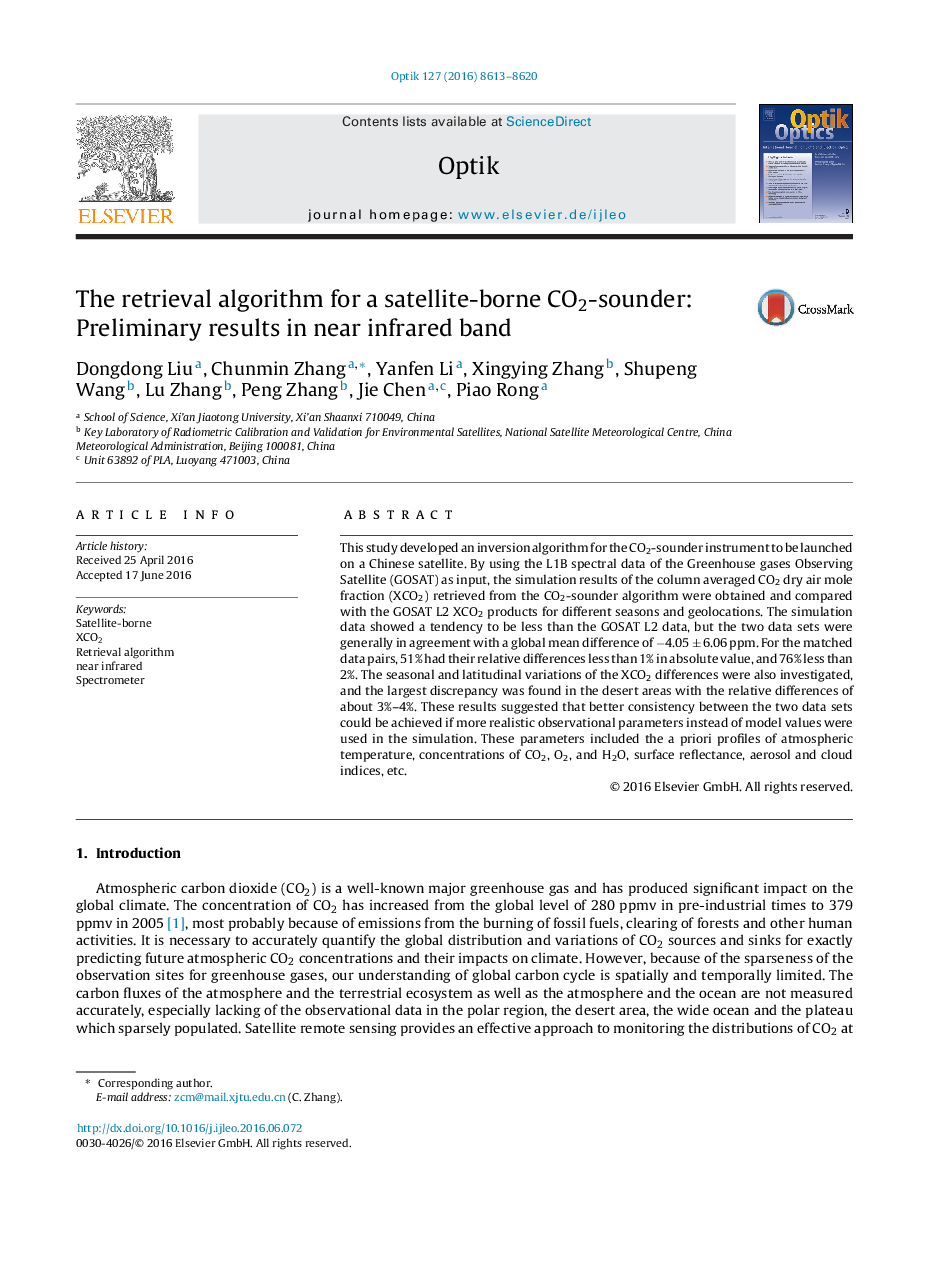| Article ID | Journal | Published Year | Pages | File Type |
|---|---|---|---|---|
| 10428484 | Optik - International Journal for Light and Electron Optics | 2016 | 8 Pages |
Abstract
This study developed an inversion algorithm for the CO2-sounder instrument to be launched on a Chinese satellite. By using the L1B spectral data of the Greenhouse gases Observing Satellite (GOSAT) as input, the simulation results of the column averaged CO2 dry air mole fraction (XCO2) retrieved from the CO2-sounder algorithm were obtained and compared with the GOSAT L2 XCO2 products for different seasons and geolocations. The simulation data showed a tendency to be less than the GOSAT L2 data, but the two data sets were generally in agreement with a global mean difference of â4.05 ± 6.06 ppm. For the matched data pairs, 51% had their relative differences less than 1% in absolute value, and 76% less than 2%. The seasonal and latitudinal variations of the XCO2 differences were also investigated, and the largest discrepancy was found in the desert areas with the relative differences of about 3%-4%. These results suggested that better consistency between the two data sets could be achieved if more realistic observational parameters instead of model values were used in the simulation. These parameters included the a priori profiles of atmospheric temperature, concentrations of CO2, O2, and H2O, surface reflectance, aerosol and cloud indices, etc.
Related Topics
Physical Sciences and Engineering
Engineering
Engineering (General)
Authors
Dongdong Liu, Chunmin Zhang, Yanfen Li, Xingying Zhang, Shupeng Wang, Lu Zhang, Peng Zhang, Jie Chen, Piao Rong,
